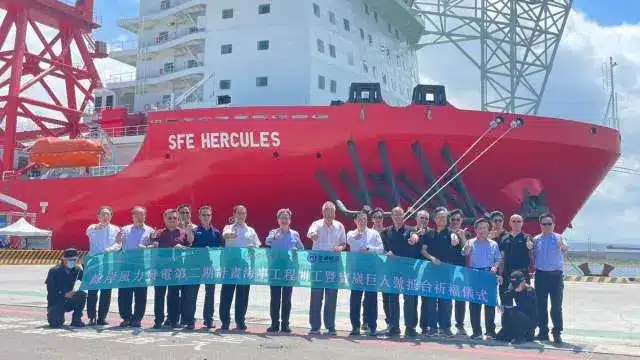The offshore wind market continues to experience high demand, but the actual level of this demand is debatable. Some segments of the market are advocating for more new builds, citing predictions of astronomical demand by the end of the decade. Despite these predictions, announcements of new build vessels remain scarce.
New vessels are beneficial for the market, but the new builds being discussed are expensive. In a market where finding work might become challenging, few are willing to finance such projects. However, the Chinese are producing vessels in large numbers. On paper, these vessels should be capable of performing most tasks expected of non-Chinese new builds. The critical question is whether these Chinese vessels could pose a competitive threat to non-Chinese vessels if they expand into the global market.
Cost
Cost plays a significant role in this scenario. Chinese vessels are cheaper to build or hire compared to non-Chinese vessels, which is an attractive proposition for developers in the current market. The cost of building offshore wind projects has skyrocketed due to higher interest rates and inflation, putting immense pressure on developers. Consequently, some developers are scaling down, as an example lately we have seen companies like Shell and BP pausing their offshore wind ambitions and scaling back their commitment for future projects. Developers are looking to cut costs wherever possible, and a reduction in vessel hiring cost is a potential area for savings.
Chinese vessels offer a cheaper option for developers, as seen in South Korea, where reservation agreements have been signed between South Korean EPCI contractors and Chinese vessel operators. This has caused uproar in the South Korean industry, where Chinese suppliers and manufacturers are favored over local content due to competitive pricing and a lack of political intervention to protect local manufacturers and suppliers. Additionally, interest in purchasing domestically built Chinese vessels is growing, as evidenced by Shinfox Energy acquiring several Chinese vessels for projects in Taiwan. These acquisitions indicate that companies are increasingly considering Chinese-built vessels, making some industry players nervous.
South Korean Shipyards
South Korean shipyards are concerned about the capacity of Chinese shipyards, which they must compete against. They highlight price as a significant factor, but also point out that Chinese shipyards can better accommodate larger orders driven by the development of larger turbine sizes. However, South Korean shipyards do not address the potential secondhand market for Chinese offshore wind installation vessels, which could dry up new demand and significantly impact day rates on a global scale.
Non-Chinese New Builds vs. Chinese New Builds
Non-Chinese new builds are equipped with the latest and best technology in vessel design, jacking systems, cranes, dynamic positioning, electrical components, and more. These features make non-Chinese vessels finely tuned machines for offshore wind installation. In contrast, Chinese vessels are equipped with domestic equipment, creating uncertainty for non-Chinese buyers. Could the risk of acquiring “inferior” vessels ultimately cost more than building a vessel in European standards?
Chinese vessels, though cheaper, are not necessarily low-quality. Buying a new build vessel with a 1600-ton crane capacity and substantial deck space will still cost between $100 million and $200 million. Despite these costs, it is evident that some are willing to invest in these vessels, introducing new competition into the market faster than anticipated and potentially altering the current dynamics of the vessel market.
Image credit: Shinfox



















































































